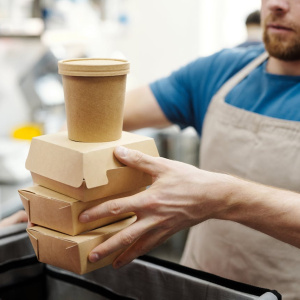
This study reviews Life Cycle Analyses (LCA) on reusable food packaging and critically assesses the quality of the LCA methodology. It provides a framework for good practice for more clarity and consistency in LCAs comparing reusable vs single-use packaging.
Abstract
Re-use and refill are attracting increased attention to increase packaging circularity. At the same time a large part of industry, including the food and beverage sector, is simultaneously setting goals towards net-zero and environmental protection. Reuse is relatively common within the beverage sector and for secondary and tertiary packaging. However, although the latest version of the European Union Packaging and Packaging Waste Regulation legislation maintains the focus of reuse obligations to beverage packaging and transport packaging it leaves member states the freedom to expand the scope of reuse obligations to potentially more challenging primary packaging applications in terms of cleaning and refurbishing requirements. To ensure that the increased circularity of re-use systems is not achieved at the expense of environmental impacts, it is becoming highly critical to introduce more rigor into how re-use systems are compared with single-use systems, not only in terms of life cycle assessment (LCA) methodology, but also in terms of the nomenclature used, default reuse parameters evaluated, and how the single-use reference system is chosen. The present work examines a selection of LCA studies performed over the past decade on reusable packaging in direct contact with food and critically reviews their quality regarding LCA methodology. Based on the observations, we propose a framework for good practice aiming to provide more clarity and consistency in the preparation of LCAs comparing reusable packaging systems to single-use packaging.
References
Namy Espinoza-Orias, Lars Lundquist, Life cycle assessment of reusable food and beverage packaging systems: A proposal of good practice, Journal of Cleaner Production, Volume 499, 2025,1 45207.
https://doi.org/10.1016/j.jclepro.2025.145207.
See more here. Read TABLE explainer,







Post a new comment »